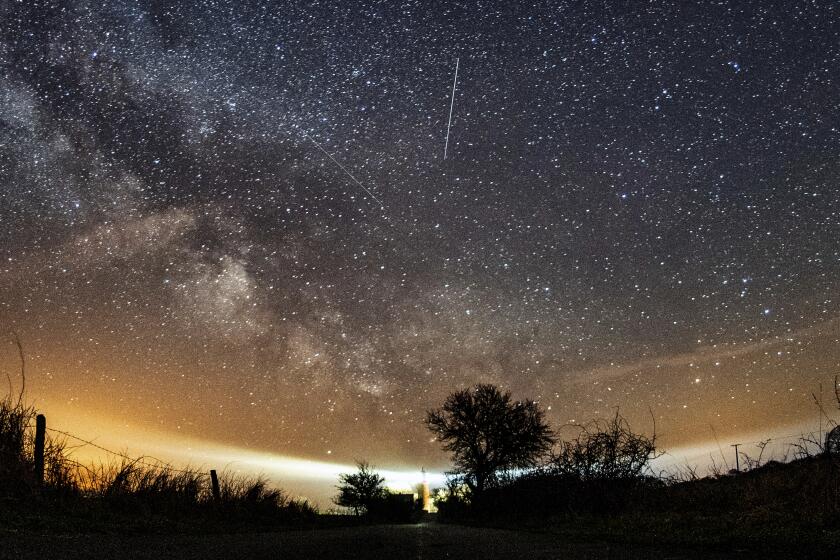Newsletter: It’s Biden’s biggest climate policy. What happens if Joe Manchin kills it?
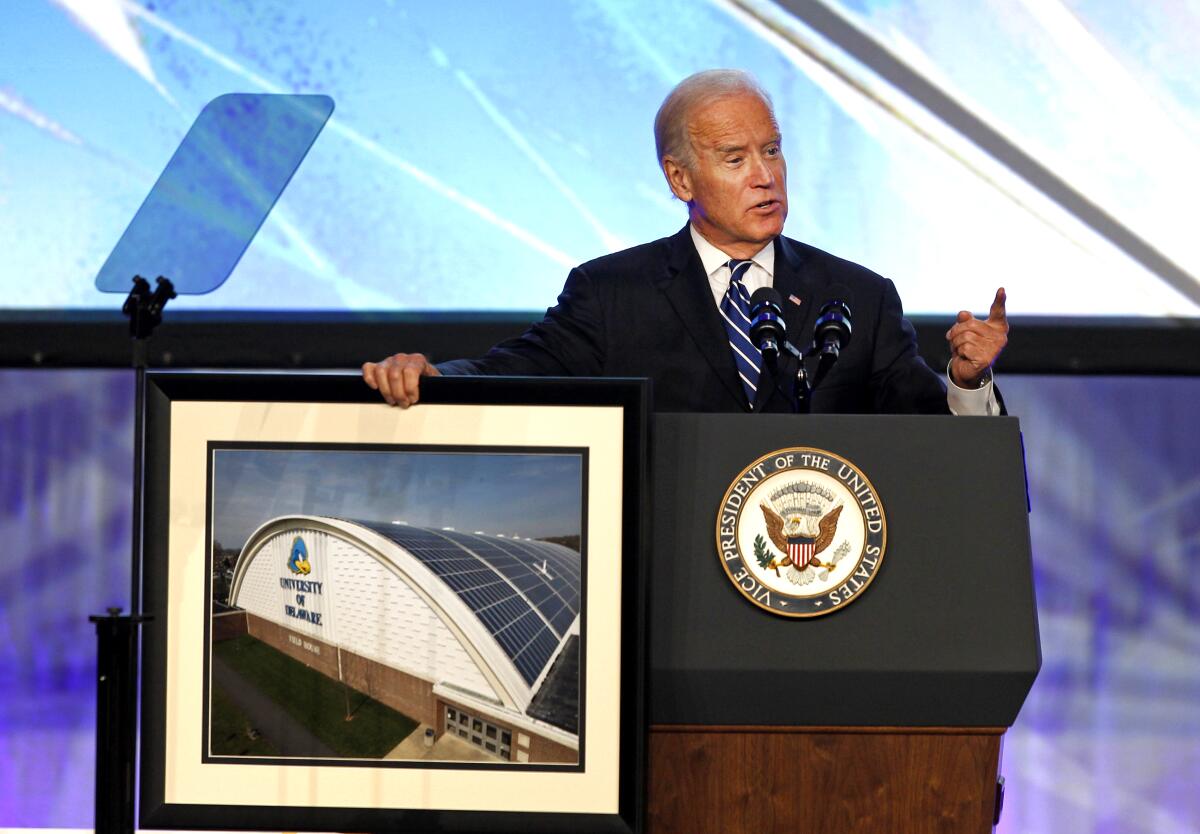
- Share via
This is the Oct. 21, 2021, edition of Boiling Point, a weekly newsletter about climate change and the environment in California and the American West. Sign up here to get it in your inbox.
For the first time in a decade, Congress is debating a sweeping climate plan with more than a snowball’s chance in hell of passage.
Make no mistake, the “Build Back Better” legislation proposed by President Biden is a climate bill. It would prod utility companies to replace fossil fuels with clean energy, expand tax credits for solar and wind power and electric cars, require oil and gas companies to pay for methane emissions and fund farming and forestry programs that keep carbon out of the atmosphere.
But with zero Republican support in the Senate, the bill’s passage hinges on two skeptical Democrats, Kyrsten Sinema of Arizona and Joe Manchin of West Virginia, both of whom say the $350-billion annual price tag is too high, despite the escalating costs of the climate crisis — and one of whom, Manchin, reportedly won’t support a key program to clean up the power grid.
Yes, it’s a special quirk of American democracy that a man who got rich off coal and is raking in campaign funds from oil and gas companies has the power to “yea” or “nay” action to combat climate change, even as it threatens his home state with more destructive floods. But that’s the way the Founders intended it, or something like that. So it’s probably time to zap this “Clean Electricity Performance Program” that Manchin can’t stand — CEPP for short — and move on with the rest of the plan, right?
Thing is, CEPP is the most important climate provision of them all.
It’s not just me saying that. A new analysis from San Francisco research firm Energy Innovation concludes that the clean electricity program — coupled with tax credits — could account for more than half of the climate progress from Build Back Better.
CEPP would create a financial incentive for big electric companies — think Berkshire Hathaway Energy or Southern Company — to get more power from climate-friendly sources. As fellow energy journalist David Roberts explains, the $150-billion program would offer payments to utilities that increase their share of clean electricity, and charge fines to those that don’t.
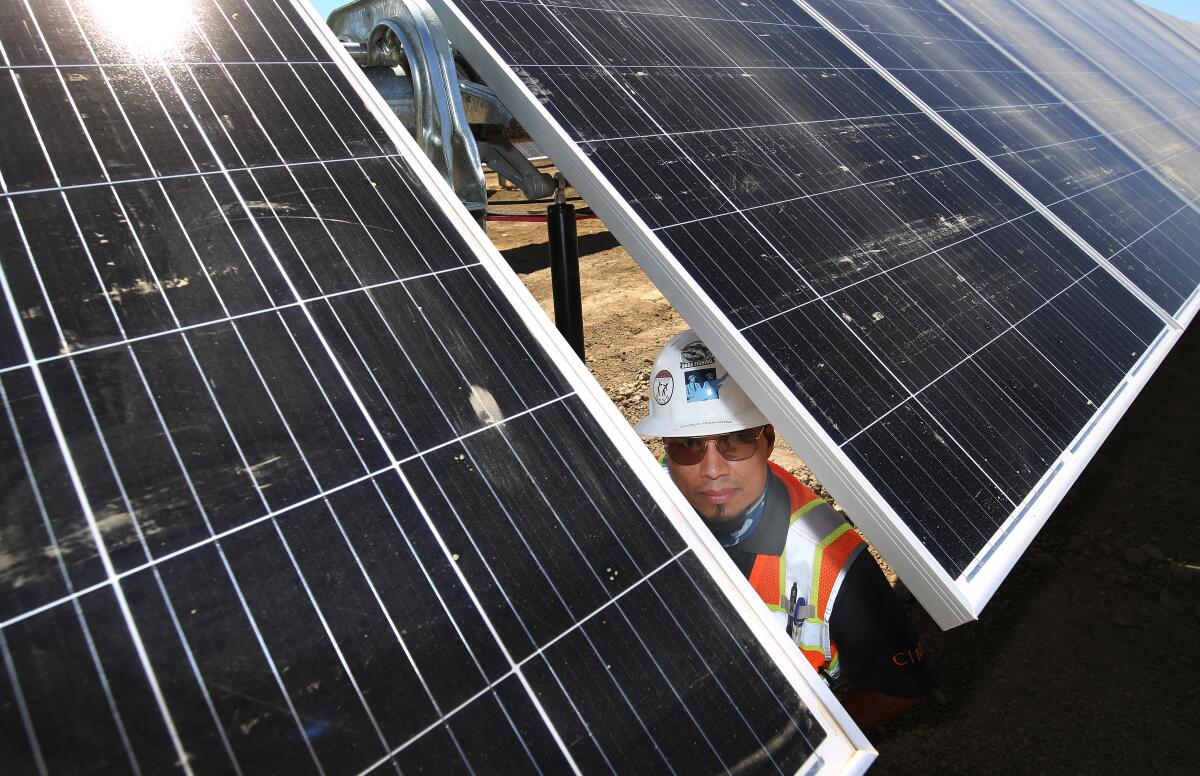
Why not just require utilities to ditch fossil fuels, like California is doing with its 100% clean energy mandate? Another special quirk of American democracy. Because Democrats have chosen to leave the filibuster in place, they can only overcome unified Republican opposition through a process called budget reconciliation. And under the rules of reconciliation — which Democrats have chosen not to override — only measures that affect the federal budget can be passed with a 50-vote majority.
So a simple clean energy mandate is out. And a complicated set of financial incentives and penalties is in.
It’s not easy to forecast how those incentives and penalties would affect emissions, but Energy Innovation gave it a shot. The firm’s researchers estimated the U.S. could reach 85% clean electricity by 2030 under CEPP in an optimistic scenario, and 70% in a pessimistic scenario. Then they plugged those estimates into their open-source Energy Policy Simulator, along with a bunch of other climate policies that are easier to forecast, both from the Build Back Better plan and a separate infrastructure bill.
The result: Biden’s plan could put America well on its way to a 50% reduction in planet-warming emissions by 2030, as the president has pledged to world leaders. If the two bills pass, U.S. greenhouse gas pollution could fall by as much as 1,500 million metric tons annually by 2030. That would be 43% below 2005 levels. Even in the pessimistic scenario, we’re talking about a 36% cut.
And those numbers could be a lowball, because some of the climate measures being debated in Congress are too difficult to model — for example, $27.5 billion for a “green bank” that would offer low-cost financing to clean energy projects.
“It’s very hard to figure out how exactly that translates into market deployment. But we’ve seen some success at the state level and abroad with clean energy banks,” said Robbie Orvis, senior director of energy policy design at Energy Innovation.
Nothing would have a greater impact than pushing utilities to produce zero-carbon electricity more quickly.
In Energy Innovation’s not-too-optimistic, not-too-pessimistic scenario, the combination of CEPP and expanded clean energy tax credits would cut greenhouse gas pollution by 750 million metric tons — 56% of the total reduction. Without CEPP, the U.S. might reach just 61% clean electricity by 2030, not 85%. Without CEPP, the U.S. might reduce its emissions just 33%.
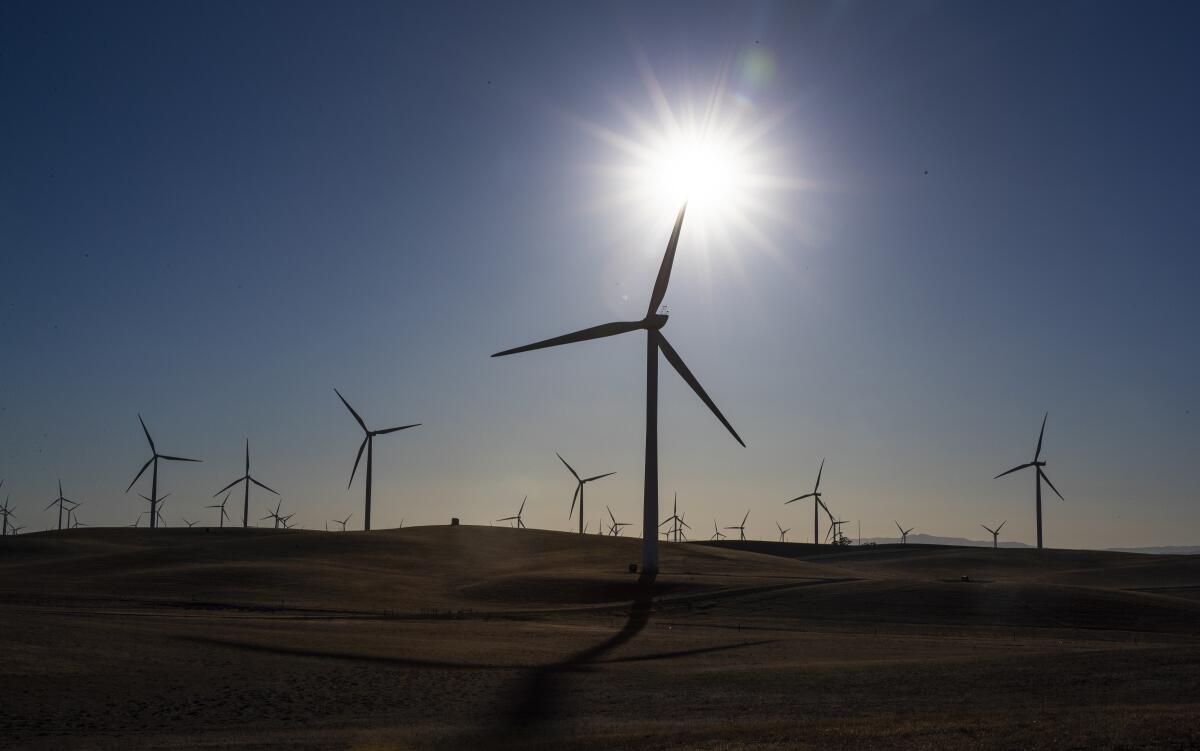
That’s a lot of numbers; you probably get the point. There are hundreds of coal plants and thousands of gas plants that collectively produce about three-fifths of the country’s power, and replacing as many as possible with solar panels, wind turbines, geothermal facilities and other zero-emitting energy sources would go a long way toward tackling the climate crisis. It would also make electric vehicles and all-electric buildings more effective climate solutions, by cleaning up the fuel sources that power them.
I asked Manchin’s office why he opposes CEPP, and whether he supports any other proposals that could have a similar impact. I received the same response, word for word, that Manchin’s team gave the New York Times’ Coral Davenport when she reported that the clean electricity program would likely be jettisoned from Build Back Better due to the senator’s opposition.
“Senator Manchin has clearly expressed his concerns about using tax payer dollars to pay private companies to do things they’re already doing. He continues to support efforts to combat climate change while protecting American energy independence and ensuring our energy reliability,” the senator’s communications director, Sam Runyon, told me via email.
There’s a lot of despairing on social media about Manchin’s demands, and the likelihood of a diminished climate bill. I’ve seen folks suggesting we’ve botched our last chance to solve global warming, and even surrendering to the idea that the world is irretrievably screwed and that a coal-state senator’s power to block climate action proves it.
But I’m not sure any of that is true, or useful. It’s impossible to know what the political future holds, especially on a planet changing as fast as ours. Maybe another decade will pass before there’s a meaningful chance for Congress to take sweeping action on climate — but maybe not. As recently as January, before Democrats won two runoff elections in Georgia and took a narrow 50-seat majority in the Senate, it didn’t seem likely that climate legislation was in the cards anytime soon.
And don’t forget that climate is a sliding scale. I’d much rather live in a world with three degrees of warming than four, and two degrees than three. There’s a lot of harm it’s still possible to prevent. Every bit of carbon kept out of the atmosphere counts.
For now, the best-case scenario for climate advocates might be Build Back Better without CEPP. I asked Orvis if it’s worth passing the bill without the clean electricity program, if that’s the only way to get Manchin’s vote. His answer: Absolutely.
“What’s being contemplated, even without the CEPP, is very historic,” he said. “If we were sitting here starting from scratch and looking at those numbers, we would be talking about what an incredible set of policies this is.”
“We know it’s not enough,” he added. “But that’s the case even with the CEPP.”
For now, here’s what’s happening around the West:
TOP STORIES
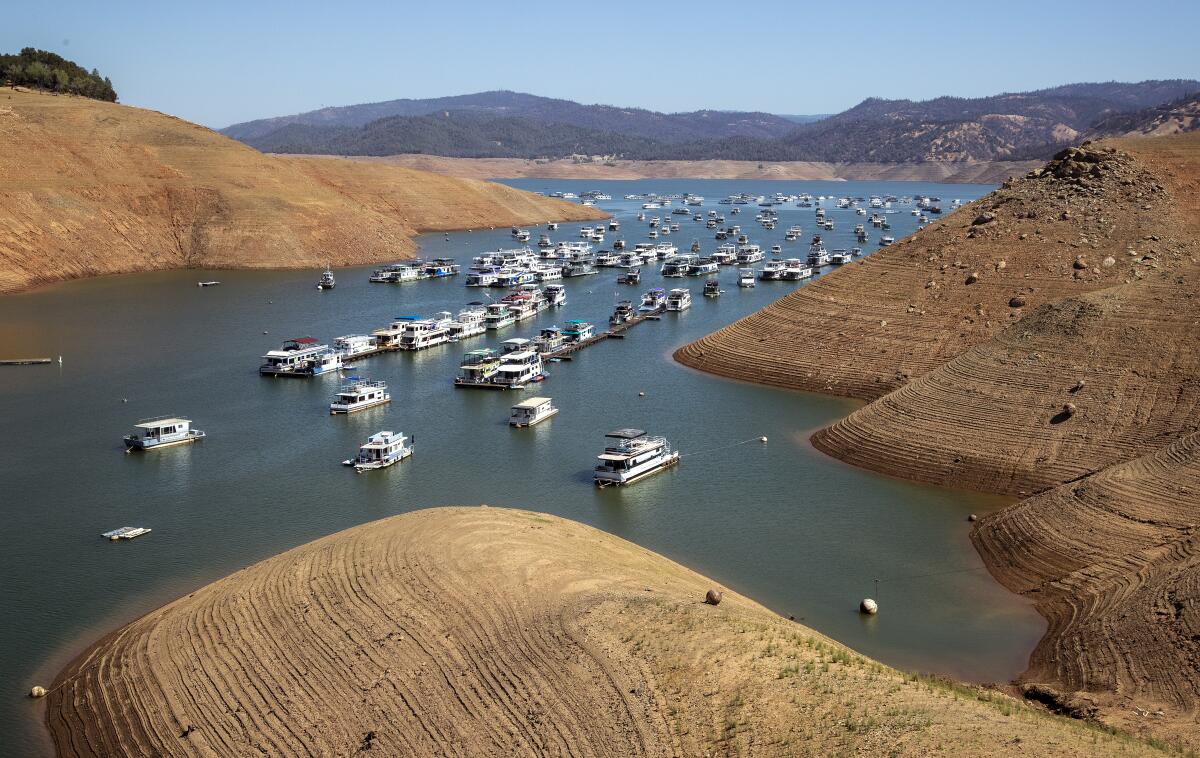
Gov. Gavin Newsom declared a statewide drought emergency, and renewed his call for Californians to cut their water use by 15%. Conservation reached 5% in August, up from 1.8% in July but still far short of the governor’s goal, my colleague Ian James reports. Newsom’s declaration came just after the state wrapped up its second-driest water year on record, with the least rain and snowfall since 1924, Laura Anaya-Morga writes. And now the return of La Niña could stack the deck for a drier-than-average winter in Southern California, which would extend a drought that is now the state’s worst on record, Paul Duginski reports.
Los Angeles City Council members are calling for the city to do a better job tracking heat deaths — and potentially holding employers accountable if they don’t do more to protect their workers — following L.A. Times reporting. Details here from Tony Barboza. And if you missed it, be sure to check out our Extreme Heat investigation, as well as my behind-the-scenes Q&A with Tony and fellow environment reporter Anna M. Phillips. See also this powerful story about people dying in the heat on the streets of Calexico, in California’s Imperial Valley near the U.S.-Mexico border, by Zoë Meyers and Kate Sequeira for inewsource.
If you didn’t buy my spiel about how climate doomism isn’t helpful, take it from our Washington, D.C., columnist Doyle McManus. He spoke with climate scientist Katharine Hayhoe, who told him, “We’re not just tied to the railway track, where there’s nothing we can do. We’re in the locomotive with our hand on the throttle.” For some more hope, see this piece by my colleague Hayley Smith on NASA turning its gaze earthward, working with California on new satellite tools to monitor surface water supplies, groundwater, snowpack, methane emissions and melting ice sheets. You can’t solve a problem you don’t understand.
POLITICAL CLIMATE
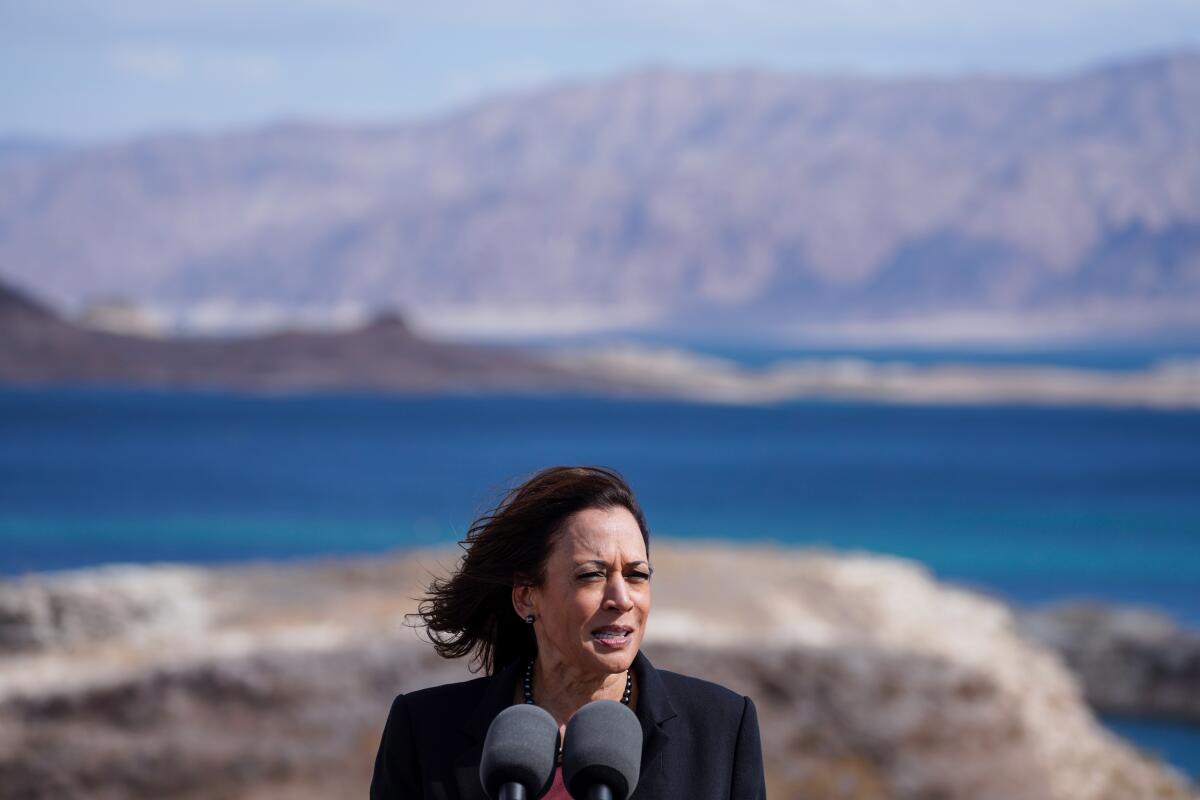
Vice President Kamala Harris visited Lake Mead, where she urged Congress to pass Biden’s climate agenda against the backdrop of a reservoir sapped by rising temperatures. “The Build Back Better agenda will help us tackle the climate crisis with investments in clean energy and electric vehicles,” Harris said, per my colleague Melanie Mason. At another ailing lake, Tahoe, water levels have dropped so low that salmon aren’t expected to spawn in a major tributary this year, Alex Wigglesworth reports.
For too long, California politicians have blamed climate change for worsening wildfires without doing enough to confront the crisis — but that may be changing. So says Times columnist George Skelton, who’s encouraged to see state leaders finally start to fund significant fire prevention and not just fire suppression. And while some conservationists say forest thinning projects designed to protect against fire are an environmental boondoggle, mainstream fire ecologists have published an extraordinary series of journal articles attacking their claims as pseudoscience, Ryan Sabalow and Dale Kasler report for the Sacramento Bee.
It looks like Chuck Sams will be confirmed as the first Native American to lead the National Park Service without much opposition. Sams had his confirmation hearing this week, telling senators he’d work to reduce overcrowding by spreading out visitation across a broader range of parks, as Kurt Repanshek reports for National Parks Traveler. He’s also got an opportunity to tell the stories of Indigenous peoples long ago kicked out of national parklands, Brian Oaster writes for High Country News.
THE ENERGY TRANSITION
A gas-fired power plant in Redondo Beach will keep operating through 2023, three years past a shutdown deadline that had been in place for a decade. The State Water Resources Control Board granted yet another new lease on life to the coastal gas plant, amid warnings that the state could once again find itself short on power on hot summer evenings, Martin Wisckol reports for the Orange County Register. I wrote earlier this year about how the AES Corp. facility explains California’s energy problems.
The Golden State is having so much trouble keeping the lights on that a growing number of companies are investing in diesel backup generators. In fact, there are now enough diesel generators in the Bay Area and Southern California alone to power 15% of the state’s electric grid, Jason Fordney reports for California Energy Markets. That’s a big problem not only for climate change but also for lung-damaging air pollution. It speaks to the need for the state to get its energy house in order.
A new study finds that radioactive contamination from the Santa Susana Field Lab may have migrated into Simi Valley and Thousand Oaks during the Woolsey fire — contradicting a report by state officials. Here’s the story from Mike Harris at the Ventura County Star. And see also my piece from earlier this year on the long legacy of a nuclear meltdown at Santa Susana.
THE OIL SPILL
Regulators who reviewed plans for an undersea oil pipeline off Orange County in the 1970s foresaw the possibility of an anchor strike — but predicted only 50 barrels of oil would spill, a wild underestimate seemingly not backed up by any real analysis. More details here from The Times’ Adam Elmahrek, Anita Chabria and Laura J. Nelson. In related news, Thomas Curwen reports that the Coast Guard and shipping companies opposed Shell’s plans for offshore oil platforms along the Orange County coast when they were first proposed, arguing they posed a risk to shipping traffic in and out of the ports.
The company at the center of the massive oil spill has received $31 million in federal relief since 2016, including a Paycheck Protection Program loan last year that was later forgiven. Those revelations, reported by The Times’ Hannah Fry and Richard Winton, came amid heightened scrutiny of offshore drilling. Anna M. Phillips reports that the federal government has allowed oil companies to leave most inactive pipelines in place, despite regulations to the contrary. Hundreds of people joined Jane Fonda at a protest in Laguna Beach, calling for an end to offshore oil operations, Andrew Turner reports. And conservationists are renewing calls for the Biden administration to create a 10,000-square-mile marine sanctuary, Jennifer Yachnin reports for E&E News.
“Birds don’t ever do anything to say ‘thank you’... They hate us, and they are terrified of us, and they are stressed out the whole time. They don’t know that we’re helping them. So this is the only thanks we get, is just seeing them leave us in good health.” The Times’ Robin Estrin wrote a gorgeous piece about rescue workers cleansing birds of oil and watching them take flight. And as for the oil spill’s cause, Richard Winton and Deborah Netburn wrote about the latest in the investigation.
ONE MORE THING

You’ve probably heard plenty about the oil spill, but less about the awful stench that has been giving people headaches, nausea and burning eyes in the Southern California city of Carson the last few weeks. Officials say the source is hydrogen sulfide coming from the Dominguez Channel, where drought has caused decaying vegetation to build up, as my colleagues Hailey Branson-Potts and Andrew J. Campa report. But questions remain about why it took so long for officials to start addressing the problem.
A likely root cause: environmental injustice, in which low-income communities of color often don’t get the immediate support or attention that wealthier, whiter areas receive when problems strike. Carson’s population is 37% Latino, 27% Asian and 24% Black.
Public health officials are advising Carson-area residents to avoid outdoor exercise at night and in the early morning. And U.S. Rep. Nanette Barragán has asked Gov. Gavin Newsom to declare a state of emergency. We’ll see how the governor responds.
We’ll be back in your inbox next week. If you enjoyed this newsletter, please consider forwarding it to your friends and colleagues.


